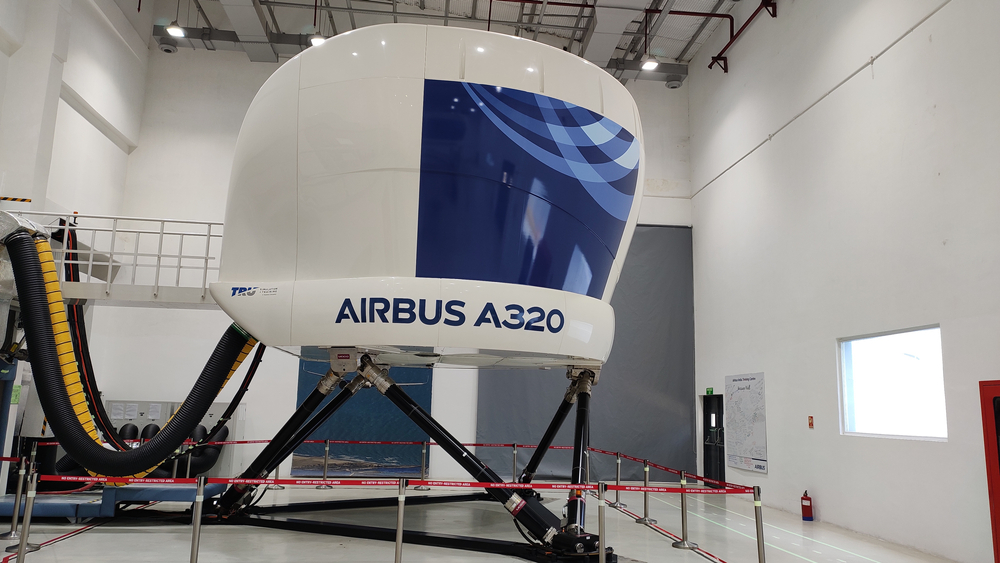Whether you are an experienced pro with years of flying under your belt or fresh off your first solo flight, you have probably noticed that the aviation job market has its ups and downs. The timing of the pilot job search can make all the difference, whether you are eyeing a promotion to Captain or thinking about a big career switch.
The industry is still facing a pilot shortage. Boeing predicts demand for 674,000 new pilots over the next 20 years, while Airbus puts that number at 585,000. Whichever way you look at it, there’s a great opportunity to seek a new pilot job, and getting your application in at the right time can make all the difference to your chances.
So, when is the sweet spot to look for a new pilot role? We break down the best times of year to start your pilot job hunt and why these moments can give you the edge in the competitive skies.
Table of Contents
Why timing matters in a pilot job search
Knowing when to apply for a new pilot job is just as important as knowing where to look. At certain times of the year, it feels like airlines and recruitment agencies are actively seeking you out, making your job search almost effortless. But at other times, despite putting in lots of work, your applications may go unnoticed. Why is that?
During peak hiring seasons, airlines experience a higher demand for pilots. This happens after the busy summer months or at the start of the calendar year. Airlines are preparing for new routes, flight schedules, or new aircraft deliveries. In the meantime, recruitment companies are actively searching for pilots to fill these roles.
On the other hand, during slower periods, like after the holiday rush or during economic downturns, hiring naturally slows down. Airlines reduce recruitment efforts, and this leads to fewer job openings for pilots. During these times, airlines often prioritize internal promotions or fill specialized roles instead of hiring new pilots. So, by timing your job search to match peak hiring periods, you can increase your chances of landing your dream job.
Best time to apply for a pilot job
1. September to October
The brief window between September and October is one of the best times for pilots to search for a new role, as it marks the post-summer hiring spree. As the summer travel boom comes to an end, airlines take a moment to evaluate their staffing needs for the months ahead. This is when many carriers turn their attention to filling gaps left by seasonal departures, retirements, or the growing demand for additional flight crew. The pressure of the summer season has passed, and airlines are ready to replenish their teams, making it a prime time for pilots to explore new opportunities.
What is even better is that many airlines reassess their budgets and set hiring goals for the upcoming fiscal year. This often leads to a surge in job openings, giving pilots a chance to make a move. So, if you are a first-time applicant or looking to break into the industry, autumn is an especially exciting time. Airlines usually launch new training programs for aspiring pilots during this period, which opens the door for those just starting their aviation careers.
2. January to February
January and February are great months for pilots looking for a job. This is the start of the early-year recruiting surge, when airlines focus on their long-term staffing needs. After the holiday rush, airlines take a step back to evaluate staffing, especially as they prepare for new aircraft deliveries and expanded flight schedules.
For experienced pilots, this is the perfect time to make a move or aim for career growth. With new budgets already approved, they are ready to hire more pilots to meet increasing demand for the year ahead. Many airlines begin filling training slots, particularly for type ratings and initial pilot training, ensuring they are ready for the busy summer season.
Recruitment companies also gear up for this cycle, helping airlines quickly connect with qualified pilots. If you are aiming for a promotion or a new role, the beginning of the year is the perfect time to apply and get ahead of the competition before the summer rush.
3. April to May
Just before the summer season begins, airlines ramp up their hiring efforts to ensure they have enough pilots to meet the growing demand. Some candidates may have dropped out, others may not have passed training or simply changed their minds. Regardless, airlines still need to fill the gaps before the high season kicks off. This pre-summer recruitment surge could be the perfect time for you to jump in and secure a role, allowing you to start flying with a new airline during the peak season. It is a crucial period for pilots seeking seasonal positions or those looking to transition into a full-time role after gaining valuable experience.
So, why is this the best time to submit your application? Airlines often hire pilots for temporary roles to cover summer vacations. This makes it an ideal period for pilots seeking seasonal work on a fixed-term contract. It is also a fantastic chance for low-time pilots to rack up more flying hours.
Another benefit of this period is a quick turnaround. The pre-summer hiring process tends to be faster, with airlines in need of pilots who can start right away to meet summer schedules.

4. November to December
The months of November and December bring another opportunity for pilots. While the holiday season slows down job searches in many industries, aviation presents a quieter, less competitive time to search for your next job. Airline operations wind down, and the focus shifts to heavy maintenance, which means fewer pilots are actively seeking jobs. This is where you can truly stand out. Many pilots prefer to wait until after the new year to start their job search, so the pool of applicants is smaller in November and December.
At the same time, with the reduced flight schedule, airlines are more flexible when it comes to interviews. This means you have a better chance of finding a time that works around your current schedule. And here is the exciting part: some airlines are already planning for the year ahead. They begin reviewing staffing needs in preparation for the upcoming year. This early preparation often creates openings before the new year hiring frenzy begins, giving you the chance to get ahead of the competition.
By starting your job search now, you could land a great opportunity before January and February bring the rush of applicants. It is a quieter, yet highly strategic time to make your move.
Specific recruitment timelines
Some airlines have specific recruitment timelines that do not always follow the broader trends of the aviation industry. For example, low-cost carriers often have specific hiring schedules that are closely tied to their budget cycles. These airlines plan their staffing needs around their financial year, which may not necessarily align with peak travel seasons.
Another example is larger international airlines often recruit pilots based on long-term strategies, especially when introducing new aircraft to their fleets. They tie recruitment efforts directly to the delivery schedules of these new planes. Schedules can vary throughout the year. With significant aircraft delivery delays currently affecting the industry, airlines may suddenly need pilots at any moment. This creates an environment where pilot vacancies can emerge unexpectedly.
Airlines operating in niche markets, like cargo services, offer unique opportunities for pilots. These companies recruit pilots based on specific business needs, such as peak shipping seasons, new contracts, or logistical changes. These hiring cycles do not follow the typical passenger travel trends.
In the meantime, private operators are like the wildcards of the aviation world. They also do not follow the usual industry rhythms. Their hiring is driven by what is happening in their business model, specific flight schedules, corporate needs, or high-demand clients. They are not concerned with the usual rush of passenger traffic. Instead, they may be looking for pilots when their fleet of private jets grows, or when they need specific skills for a special mission. Whether it is for seasonal needs or something more unusual, these operators offer opportunities that can pop up when you least expect them!

By focusing on the optimal times of year, such as the post-summer and early-year recruiting surges, you can significantly increase your chances of landing the ideal role. Stay informed about industry trends, airline updates, and the hiring cycles of your target airlines. Planning your job search around these key windows will help you achieve the best results.
Check out the latest vacancies for pilots here.

